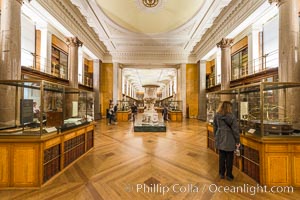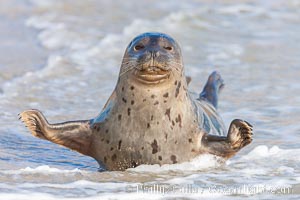
Pacific harbor seal in shallow water, on sand at the edge of the sea.
Species: Pacific harbor seal, Phoca vitulina richardsi
Location: La Jolla, California
Image ID: 26315
Species: Pacific harbor seal, Phoca vitulina richardsi
Location: La Jolla, California
Image ID: 26315
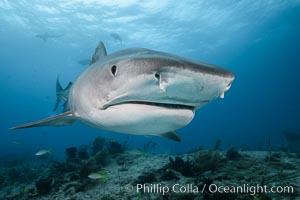
Tiger shark close up view, including nostrils and ampullae of Lorenzini.
Species: Tiger shark, Galeocerdo cuvier
Location: Bahamas
Image ID: 31913
Species: Tiger shark, Galeocerdo cuvier
Location: Bahamas
Image ID: 31913
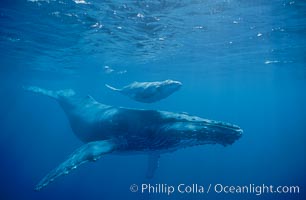
North Pacific humpback whales, a mother and calf pair swim closely together just under the surface of the ocean. The calf will remain with its mother for about a year, migrating from Hawaii to Alaska to feed on herring.
Species: Humpback whale, Megaptera novaeangliae
Location: Maui, Hawaii
Image ID: 00140
Species: Humpback whale, Megaptera novaeangliae
Location: Maui, Hawaii
Image ID: 00140

Food vendors at the Del Mar Fair, famous for their tasty, greasy, salty, fattening and generally unwholesome food, which visitors eat by the ton. Bright lights at night.
Location: Del Mar Fair, California
Image ID: 20879
Location: Del Mar Fair, California
Image ID: 20879
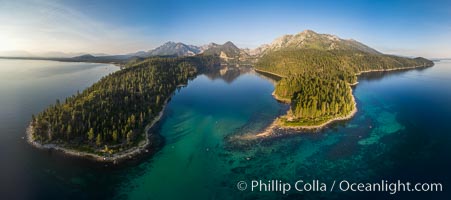
Emerald Bay Lake Tahoe, aerial panoramic photo of the mouth of the bay, early morning.
Location: Lake Tahoe, California
Image ID: 38130
Panorama dimensions: 4417 x 9952
Location: Lake Tahoe, California
Image ID: 38130
Panorama dimensions: 4417 x 9952
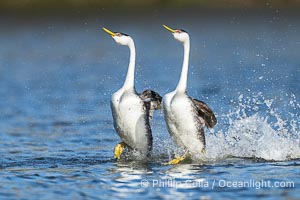
Western Grebes rushing across Lake Wohlford, exhibiting a spectacular courtship behavior in which the aquatic birds literally run across the surface of the water while their feet hit the water up to 20 times per second.
Species: Western Grebe, Aechmophorus occidentalis
Location: Lake Wohlford, Escondido, California
Image ID: 40840
Species: Western Grebe, Aechmophorus occidentalis
Location: Lake Wohlford, Escondido, California
Image ID: 40840
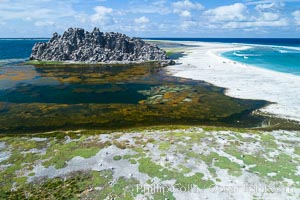
Clipperton Rock, a 95' high volcanic remnant, is the highest point on Clipperton Island, a spectacular coral atoll in the eastern Pacific. By permit HC / 1485 / CAB (France).
Location: Clipperton Island, France
Image ID: 32841
Location: Clipperton Island, France
Image ID: 32841
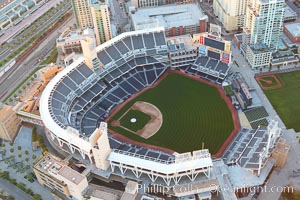
PETCO Park, an open-air stadium in downtown San Diego, home of the San Diego Padres baseball club. Opened in 2004, it has a seating capacity of approximately 42000.
Location: San Diego, California
Image ID: 22468
Location: San Diego, California
Image ID: 22468
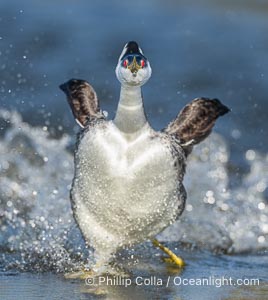
Extreme closeup view of a Western Grebe as it rushes, running across the water as part of an elaborate courtship behavior.
Species: Western Grebe, Aechmophorus occidentalis
Location: Lake Wohlford, Escondido, California
Image ID: 40841
Species: Western Grebe, Aechmophorus occidentalis
Location: Lake Wohlford, Escondido, California
Image ID: 40841
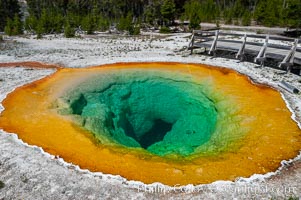
Morning Glory Pool has long been considered a must-see site in Yellowstone. At one time a road brought visitors to its brink. Over the years they threw coins, bottles and trash in the pool, reducing its flow and causing the red and orange bacteria to creep in from its edge, replacing the blue bacteria that thrive in the hotter water at the center of the pool. The pool is now accessed only by a foot path. Upper Geyser Basin.
Location: Upper Geyser Basin, Yellowstone National Park, Wyoming
Image ID: 07268
Location: Upper Geyser Basin, Yellowstone National Park, Wyoming
Image ID: 07268
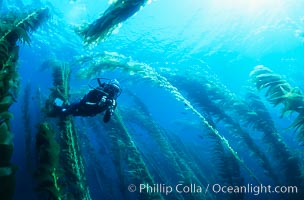
Diver amidst kelp forest.
Species: Giant kelp, Macrocystis pyrifera
Location: San Clemente Island, California
Image ID: 03420
Species: Giant kelp, Macrocystis pyrifera
Location: San Clemente Island, California
Image ID: 03420
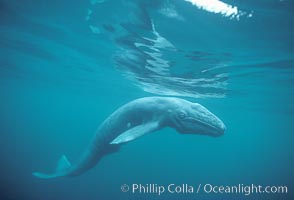
A neonate gray whale calf, born just hours before, still exhbiting embryonic folds in the skin along its side. This baby gray whale was born in the cold waters of Big Sur, far to the north of the Mexican lagoons of Baja California where most gray whale births take place.
Species: Gray whale, Eschrichtius robustus
Location: Monterey, California
Image ID: 01135
Species: Gray whale, Eschrichtius robustus
Location: Monterey, California
Image ID: 01135
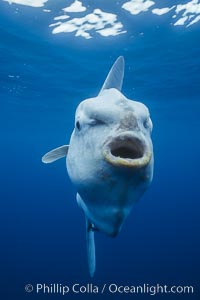
Ocean sunfish (Mola mola) with mouth wide open for slurping zooplankton, open ocean.
Species: Ocean sunfish, Mola mola
Location: San Diego, California
Image ID: 03319
Species: Ocean sunfish, Mola mola
Location: San Diego, California
Image ID: 03319
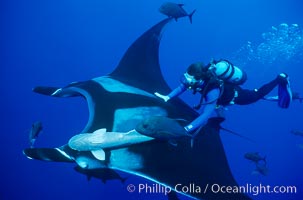
Manta ray and scuba diver.
Species: Giant manta ray, Manta birostris
Location: San Benedicto Island (Islas Revillagigedos), Baja California, Mexico
Image ID: 02466
Species: Giant manta ray, Manta birostris
Location: San Benedicto Island (Islas Revillagigedos), Baja California, Mexico
Image ID: 02466
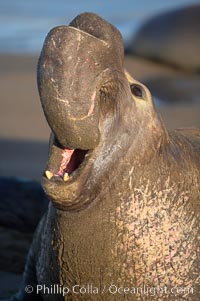
Bull elephant seal, adult male, bellowing. Its huge proboscis is characteristic of male elephant seals. Scarring from combat with other males. Central California.
Species: Elephant seal, Mirounga angustirostris
Location: Piedras Blancas, San Simeon, California
Image ID: 15387
Species: Elephant seal, Mirounga angustirostris
Location: Piedras Blancas, San Simeon, California
Image ID: 15387
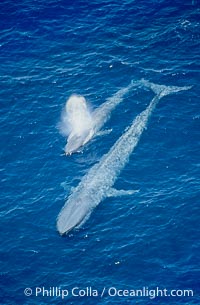
Two blue whales, a mother and her calf, swim through the open ocean in this aerial photograph. The calf is blowing (spouting, exhaling) with a powerful column of spray. The blue whale is the largest animal ever to live on Earth.
Species: Blue whale, Balaenoptera musculus
Location: San Diego, California
Image ID: 02304
Species: Blue whale, Balaenoptera musculus
Location: San Diego, California
Image ID: 02304
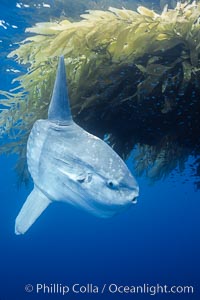
Ocean sunfish recruiting fish near drift kelp to clean parasites, open ocean, Baja California.
Species: Ocean sunfish, Mola mola
Image ID: 03267
Species: Ocean sunfish, Mola mola
Image ID: 03267
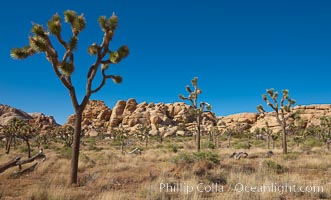
Joshua trees, a species of yucca common in the lower Colorado desert and upper Mojave desert ecosystems.
Species: Joshua tree, Yucca brevifolia
Location: Joshua Tree National Park, California
Image ID: 26747
Species: Joshua tree, Yucca brevifolia
Location: Joshua Tree National Park, California
Image ID: 26747
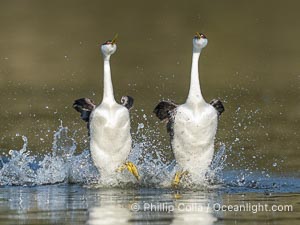
Two Western Grebes in a Spectacular Rush Across the Surface of Lake Wohlford. Rushing is a courtship behavior among grebes and requires the aquatic birds to step as rapidly as 20 beats per second to walk across water in this way. Simply amazing.
Species: Western Grebe, Aechmophorus occidentalis
Location: Lake Wohlford, Escondido, California
Image ID: 40866
Species: Western Grebe, Aechmophorus occidentalis
Location: Lake Wohlford, Escondido, California
Image ID: 40866
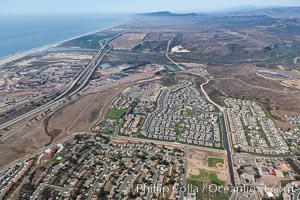
Camp Pendleton, viewed toward the north, including Pacific ocean and Interstate 5 freeway. Marine Corps Base Camp Pendleton.
Location: Marine Corps Base Camp Pendleton, California
Image ID: 25995
Location: Marine Corps Base Camp Pendleton, California
Image ID: 25995
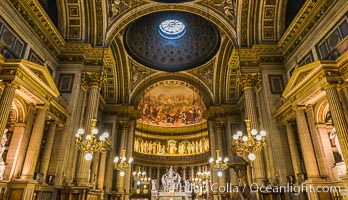
Eglise de la Madeleine, a Roman Catholic church in the 8th arrondissement of Paris, designed in its present form as a temple to the glory of Napoleon's army.
Location: Eglise de la Madeleine, Paris, France
Image ID: 28088
Location: Eglise de la Madeleine, Paris, France
Image ID: 28088
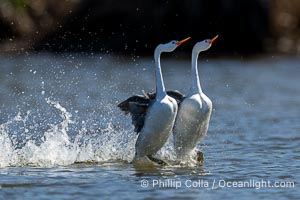
Clark's Grebes rushing side by side, a spectacular courtship behavior in which the aquatic birds literally run on the surface of the water while slapping their feet up to 20 times per second.
Species: Clark's Grebe, Aechmophorus clarkii
Location: Lake Wohlford, Escondido, California
Image ID: 40860
Species: Clark's Grebe, Aechmophorus clarkii
Location: Lake Wohlford, Escondido, California
Image ID: 40860
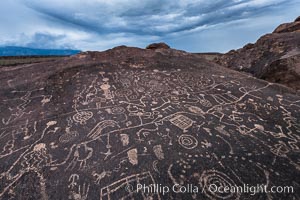
Sky Rock petroglyphs near Bishop, California. Hidden atop an enormous boulder in the Volcanic Tablelands lies Sky Rock, a set of petroglyphs that face the sky. These superb examples of native American petroglyph artwork are thought to be Paiute in origin, but little is known about them.
Location: Bishop, California
Image ID: 27000
Location: Bishop, California
Image ID: 27000
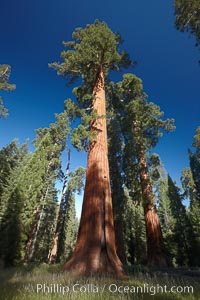
A giant sequoia tree, soars skyward from the forest floor, lit by the morning sun and surrounded by other sequioas. The massive trunk characteristic of sequoia trees is apparent, as is the crown of foliage starting high above the base of the tree.
Species: Giant sequoia tree, Sequoiadendron giganteum
Location: Mariposa Grove, Yosemite National Park, California
Image ID: 23259
Species: Giant sequoia tree, Sequoiadendron giganteum
Location: Mariposa Grove, Yosemite National Park, California
Image ID: 23259
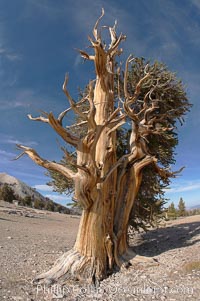
Bristlecone pine rising above the arid, dolomite-rich slopes of the White Mountains at 11000-foot elevation. Patriarch Grove, Ancient Bristlecone Pine Forest.
Species: Bristlecone pine, Pinus longaeva
Location: White Mountains, Inyo National Forest, California
Image ID: 17484
Species: Bristlecone pine, Pinus longaeva
Location: White Mountains, Inyo National Forest, California
Image ID: 17484
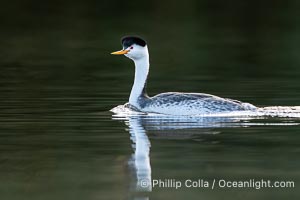
Clark's Grebe on Lake Wohlford.
Species: Clark's Grebe, Aechmophorus clarkii
Location: Lake Wohlford, Escondido, California
Image ID: 40850
Species: Clark's Grebe, Aechmophorus clarkii
Location: Lake Wohlford, Escondido, California
Image ID: 40850
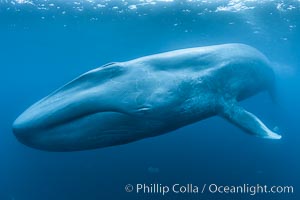
Blue whale underwater photo showing entire whale head (rostrum) to tail (fluke). This picture of a blue whale shows it swimming through the open ocean, a rare underwater view. Specialized underwater camera gear, including an extremely wide lens, was used to capture the entire enormous whale in a single photograph.
Species: Blue whale, Balaenoptera musculus
Location: California
Image ID: 27300
Species: Blue whale, Balaenoptera musculus
Location: California
Image ID: 27300
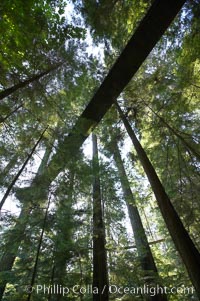
Suspension bridge in forest of Douglas fir and Western hemlock trees.
Location: Capilano Suspension Bridge, Vancouver, British Columbia, Canada
Image ID: 21156
Location: Capilano Suspension Bridge, Vancouver, British Columbia, Canada
Image ID: 21156

